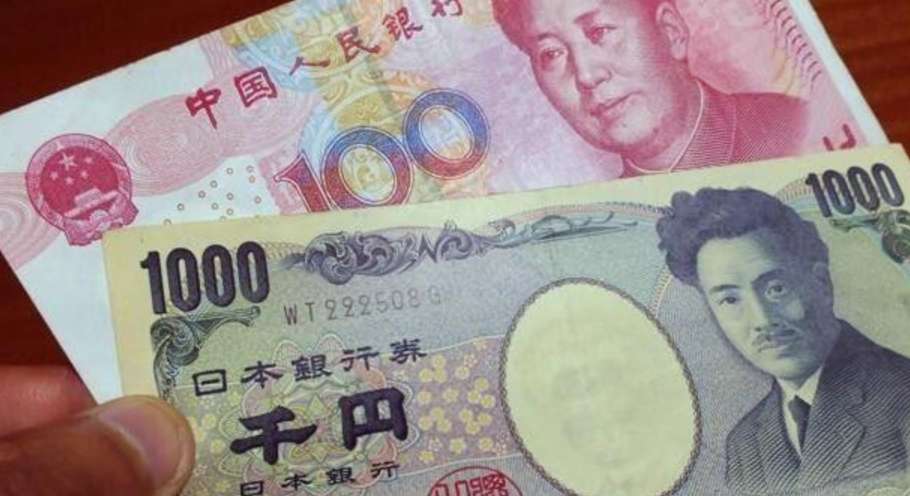Japanese Stock Market in a State of Flux
Advertisements
In recent times, inflation in Japan has shown signs of significant alleviation, a development that could signal shifts in monetary policy and market dynamics. Over the past few weeks, market sentiment has pivoted dramatically, leading to discussions surrounding the Bank of Japan's (BOJ) potential need for intervention, as well as speculation regarding the future trajectory of the Japanese yen against the backdrop of diminishing inflation pressures.
As of April, Japan’s consumer price index (CPI) reflected a decrease to 2.5% year-on-year, down from a previous rate of 2.7% noted in March. Core inflation, which excludes fresh food yet includes other essential categories like fuel, fell from 2.6% to 2.2% during the same period. Such figures are crucial indicators for the BOJ, which aims to hit a target inflation rate of around 2%. Meanwhile, the inflation that had once plagued the Japanese economy appears to be receding, stirring concerns about the consumption-driven economic growth that relies on consistent consumer demand largely buoyed by rising wages.
A phenomenon often referred to as the “wage-price spiral”—where rising wages stimulate demand, which in turn incentivizes businesses to raise prices—seems increasingly elusive. Current trajectories suggest that, without substantial wage increases from employers, Japan may struggle to sustain the consumer demand necessary for a buoyant economy. The contrast is stark when historical perspectives on Japan’s monetary policy are taken into account, considering how past actions from the BOJ have struggled to invigorate a long-stagnant economy.
Underlying issues have manifested, not least within the financial markets. Following a historic performance akin to the bullish runs seen in Western markets, the Nikkei Index surged impressively by almost 40% over the past year. However, the exuberance surrounding Japanese equities met a stern reality check as the index fell from a peak of over 41,000 points in late March to around 38,000—an indication of market volatility amidst external economic pressures and intramarket corrections.
Meanwhile, the depreciation of the yen against the dollar has led analysts to question whether the BOJ could be compelled to re-enter the forex markets as it did notably in early May. Such interventions historically aim to stabilize fluctuations in the currency, yet there's skepticism amongst traders regarding the BOJ's capability to reverse yen trends substantially. Indications suggest that traders believe the BOJ is more interested in preventing rapid depreciation rather than fundamentally altering the yen's trajectory.
Moreover, the increasing divide between the monetary policies of Japan and the US has created a unique trading environment. As the Federal Reserve shows strength in its monetary stance, the forecasted lessening of interest rates has further emboldened dollar-buying amid expectations of a persistent yield advantage over the yen. The dollar-yen currency pair had recently breached levels not seen in several years, with speculations now swirling around an ascent towards the 160 mark, illustrating the broader market's reaction to central bank policy directions.

Such dynamics speak volumes about the ongoing shifts in economic sentiment. As Japan's stock market contends with inconsistent inflows from international investors—who previously flocked to capitalize on the post-pandemic recovery—there are growing concerns around the sustainability of this momentum. Despite a previous trend of foreign capital influx, apprehension is starting to emerge as domestic market participants slow their engagement, influenced in part by fears surrounding the implications of a weaker yen and potential BOJ tightening.
In this environment, analysts note that Japanese economic performance may hinge on structural changes. One of the cruxes of restoring investor confidence could involve the successful implementation of corporate governance reforms and improved investor relations, which could see a rebound in local spending. Japan's structural weaknesses—chronic low-wage growth, an aging population, and capital markets characterized by long-held conservative practices—also paint a complex picture for those invested in the country's future.
As discussions continue regarding potential reforms and adjustments in BOJ policies, market participants must navigate these turbulent waters carefully. The relationship between central bank actions, currency valuations, and investor sentiment will undeniably play a pivotal role in shaping Japan's economic landscape in the months ahead. However, the looming question remains whether the current shifts in inflation and currency value will indeed nurture a robust recovery or whether they merely mask underlying vulnerabilities.
In conclusion, while the immediate outlook may appear cautious, the potential for significant shifts in the Japanese economic fabric holds promise. With ongoing attention directed towards how well the BOJ can maneuver amid rising challenges, one must remain vigilant as to how these factors coalesce. The interplay of inflation, wage growth, currency valuation, and governance could lead Japan toward a renewed state of economic vitality—or further entrench its status within a cycle of stagnation.